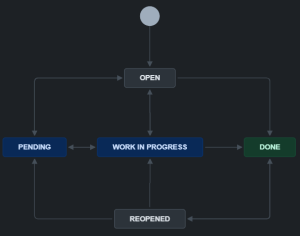Finding the sweet spot between humans and supporting applications can be a tricky problem to address. Too little communication and your client will feel abandoned – an abundance of automated communication (e.g. ‘we are working on it’) and your client won’t believe they are receiving the priority they deserve.
You want to create a pleasant, enjoyable working relationship with your client, so they remain clients for years to come.

Whether you’re managing a new client, an existing client with new requirements or where assistance is needed, they will require:
- Momentum – Their needs are met efficiently and given attention.
- Transparency – They are communicated with and can see their needs.
- Priority – They can manage and share what is important to them as clients.
- Honesty – Those commitments they are given are followed through to completion on time.
Asmorphic helps you achieve a scalable, consistent, robust set of procedures through workforce automation, which is complemented by taking full advantage of your software solutions.
Understanding the challenge
When a company works with clients, they want to make sure they communicate with them in the right way. It’s finding the right balance between using computers to talk to clients and having real people talk to them. If they use too much workforce automation, it can feel impersonal, and if they don’t use enough, the clients may feel ignored.
The company wants to have a good relationship with its clients so they will keep coming back. To do this, they need to make sure they meet the client’s needs efficiently, keep them informed about what’s happening, give them the ability to say what’s important to them, and follow through on their promises.
Sometimes, some problems can make the clients unhappy. For example, if the company doesn’t give any updates or feedback, the clients may think nobody is working on their issue. On the other hand, if they get too many automated messages or unhelpful updates, it can be annoying.
The company also needs to make sure its employees communicate well and coordinate with each other, so the clients don’t get confused or frustrated. When some employees leave or go on vacation, it’s important to pass on their work to someone else properly, or, even better, have sufficient information tracked so a handover is not needed.
If this doesn’t happen, it can cause problems and make the clients upset. The new person may not know what to do, and the clients may have to repeat themselves or feel like their problem isn’t being taken seriously.